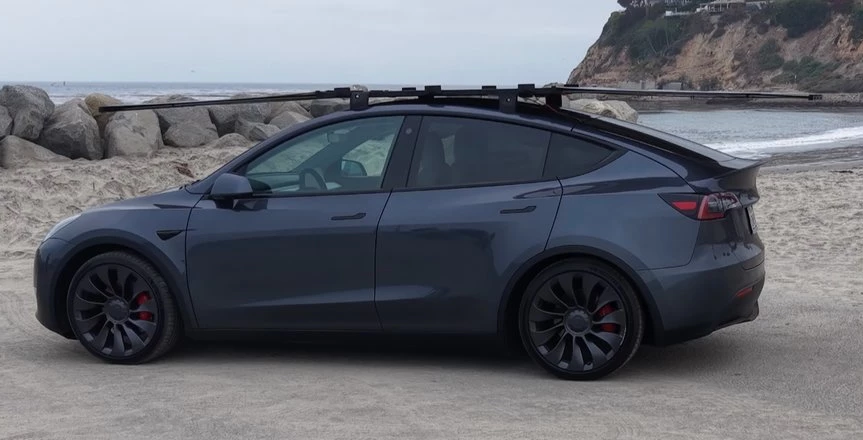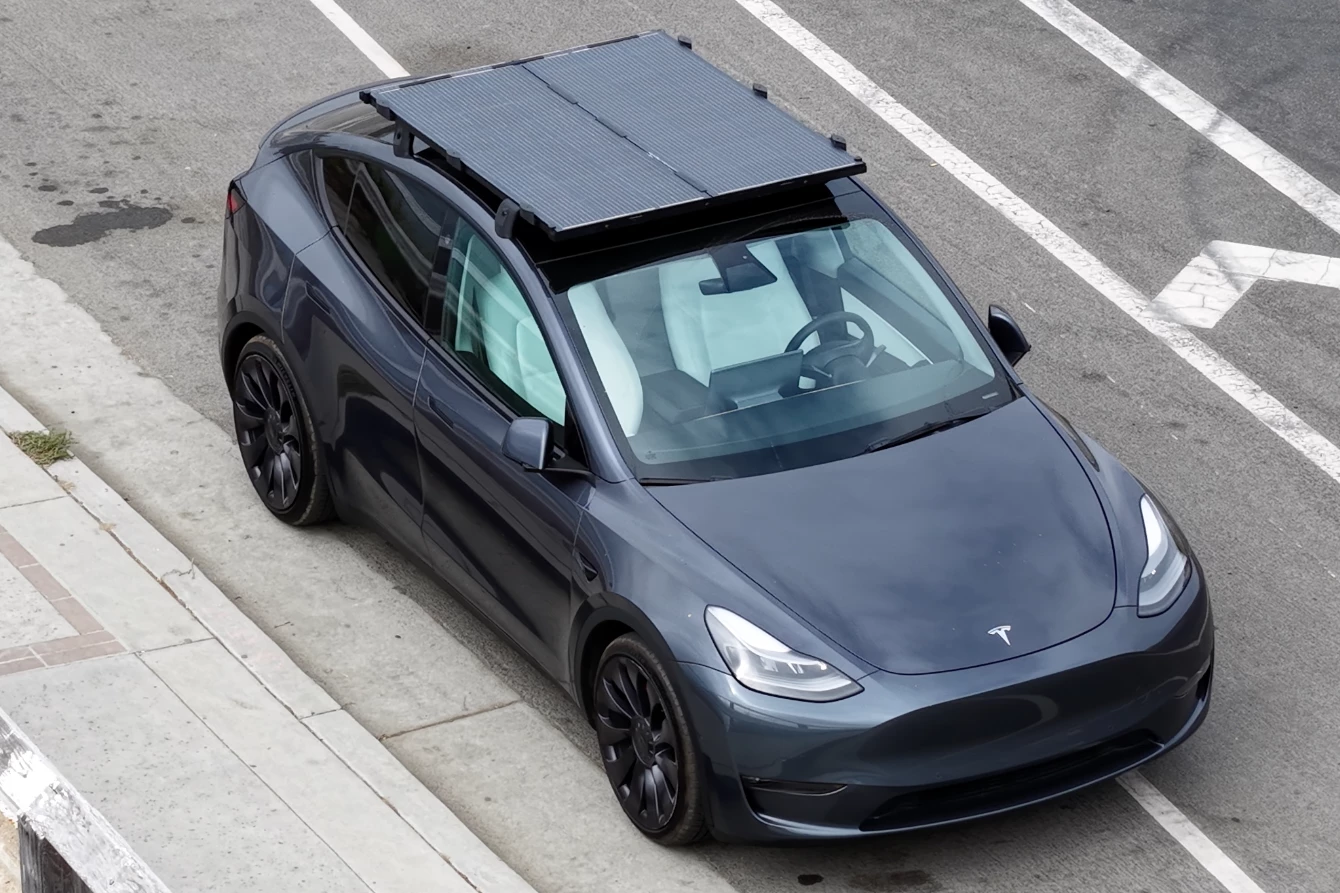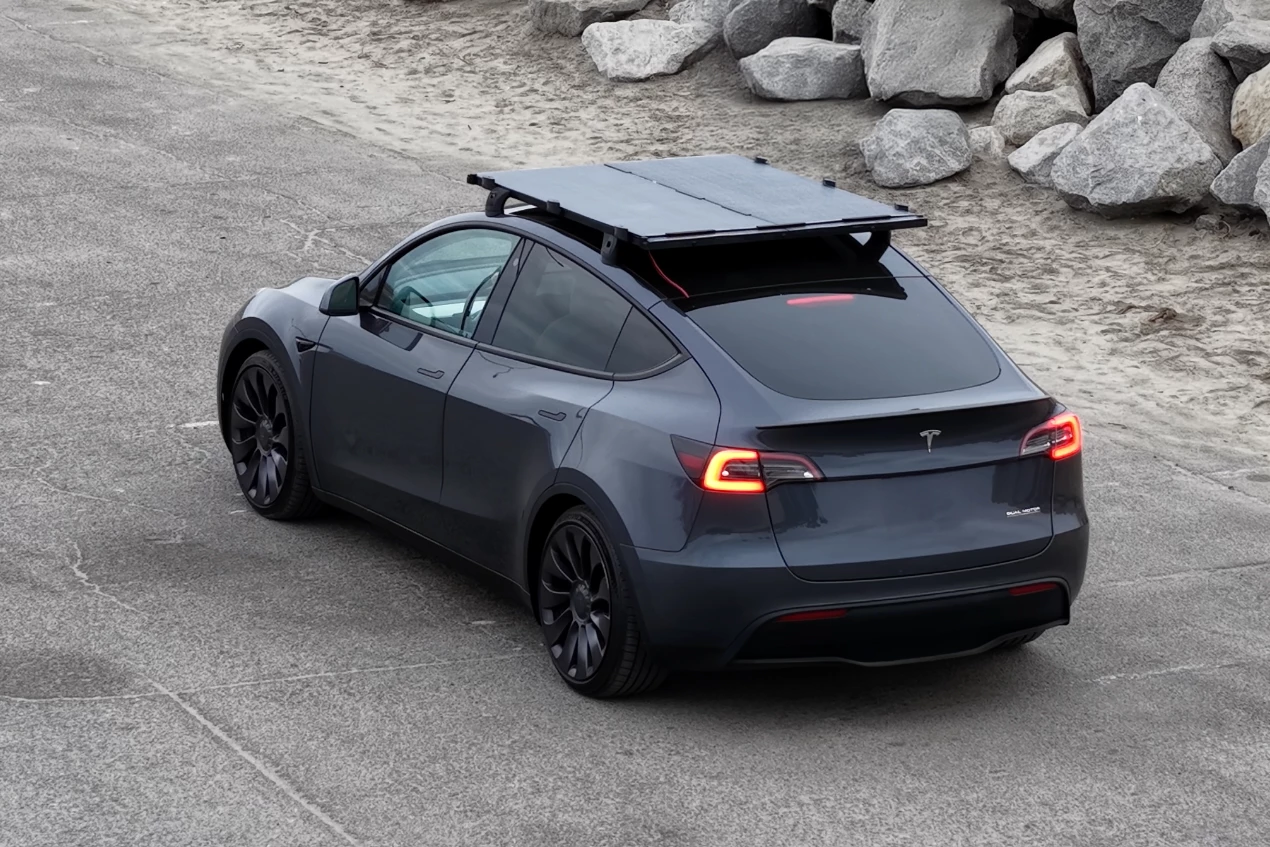While there are a few electric cars that have onboard photovoltaic panels for charging on the go, such vehicles are definitely in the minority. The DartSolar system was designed to change that, by adding a rooftop solar power system to any EV.
We first heard about the DartSolar setup back in February, when California-based inventor/Tesla-driver Omid Sadeghpour unveiled his latest prototype. At the time, it was still very much a work in progress. Now, however, he has announced availability of the more polished production model.
At the heart of the system is a 960-watt solar array made up of six 160-watt fiberglass-backed, ETFE (ethylene tetrafluoroethylene)-coated photovoltaic panels. These are arranged in three groups of two, each of which is contained within a 4-mm-thick aluminum frame mounted on stainless steel telescoping tubing.

When the car is parked, all six panels are pulled out by hand to soak up the maximum amount of sunlight. Once it's time to hit the road, the front and rear sets of panels are slid in to nest one atop the other in the middle, leaving just two panels exposed (but still working).
The whole array is hardwired to a compact power unit in the rear of the car, which converts solar power into 120-volt alternating current.

Sadeghpour states that the setup can reliably add around 5 kWh of juice to the car's battery per day, for roughly 10 to 20 miles (16 to 32 km) of solar-powered driving – of course, those figures will vary depending on factors such as weather, driving style, and make/model of car. The power unit can also be used to charge 120-volt power tools or other devices via an integrated outlet.
While the previous DartSolar prototype sat a wind-catching 11 inches (279 mm) tall, the production model is a much more aerodynamic 1.5 inches (38 mm) in height. Road tests performed using a Tesla Model Y – at sea level, with 40-psi (3-bar) tires, at an ambient temperature of 70 ºF (21 ºC) – showed that the system increased drag by a claimed 1 to 2%.

The entire rooftop part of the system reportedly tips the scales at about 90 lb (41 kg). It's able to support loads of up to 50 lb (23 kg) via an adapter, so users can still carry cargo on their roof when the need arises.
Prospective buyers can preorder the DartSolar system now via the company website. It's priced at US$2,950, has a 10-year expected lifetime, and should reportedly pay for itself in two years for a 5X return on investment. Sadeghpour tells us that units ought to be shipping to buyers by the middle of next year.
It's demonstrated in the video below.
Source: DartSolar




